- Camera traps set high up in trees in Rwanda’s Nyungwe National Park captured 35 different mammal species over a 30-day period, including a rare Central African oyan (Poiana richardsonii), a small catlike mammal that has not previously been seen in the park.
- Arboreal camera traps are a viable method for conducting mammal surveys, especially when partnered with ground cameras.
- Understanding what animals are present in an area is a first step toward protecting them.
Sneaking up on animals can be tough. That’s why wildlife researchers often turn to motion-sensing cameras, also known as camera traps, to study animals in the wild. However, most of these camera traps are positioned at or near ground level, leaving a diverse world of animals unexamined: those that dwell in the trees above.
Listen to this article here:
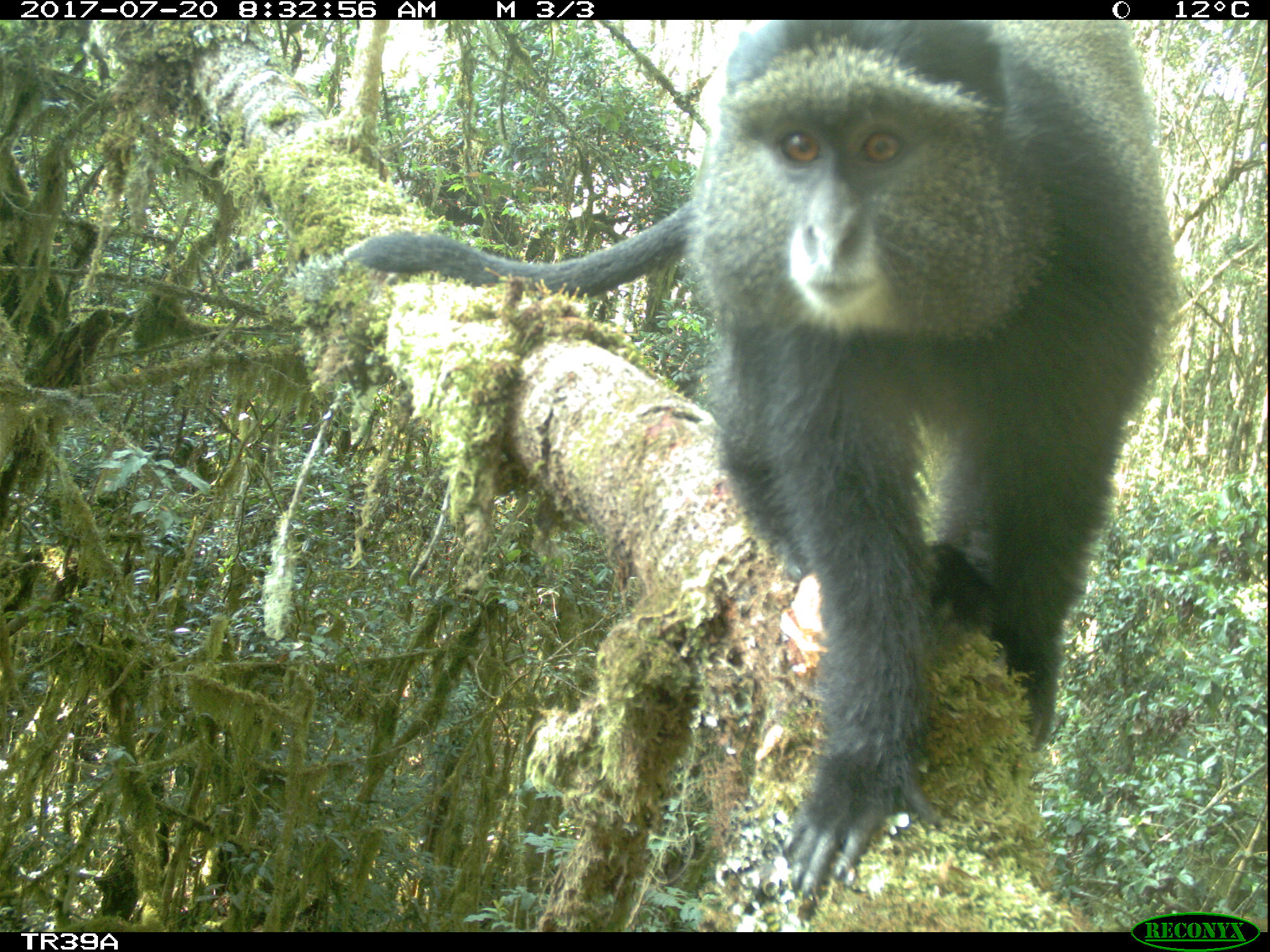
In the montane tropical forest of Nyungwe National Park, Rwanda, a team of researchers climbed 10 meters (30 feet) up into the trees to rig arboreal camera traps. They also placed a camera at the base of each tree. The 108 cameras captured more than 27,000 photos of wildlife over a 30-day period, according to a study published in the journal Animal Conservation conducted in collaboration with WCS Rwanda, University of Florida, WWF, and Rice University.
Among the photos were 35 different mammal species, including six primate species and a rare Central African oyan (Poiana richardsonii), a small catlike mammal that was not previously seen in the park.

Nyungwe National Park contains many globally threatened and endangered species and is a top priority site for biodiversity conservation. Knowing what animals are present in an area is an important first step toward taking measures to protect them.
“Because these cameras are working all day and night, they capture animals moving through the landscape that may have been missed by the human eye,” said Jennifer Moore, a postdoctoral researcher at the University of Florida and lead author of the new study. “Because of this, camera traps are more likely to document rare species of conservation concern.”
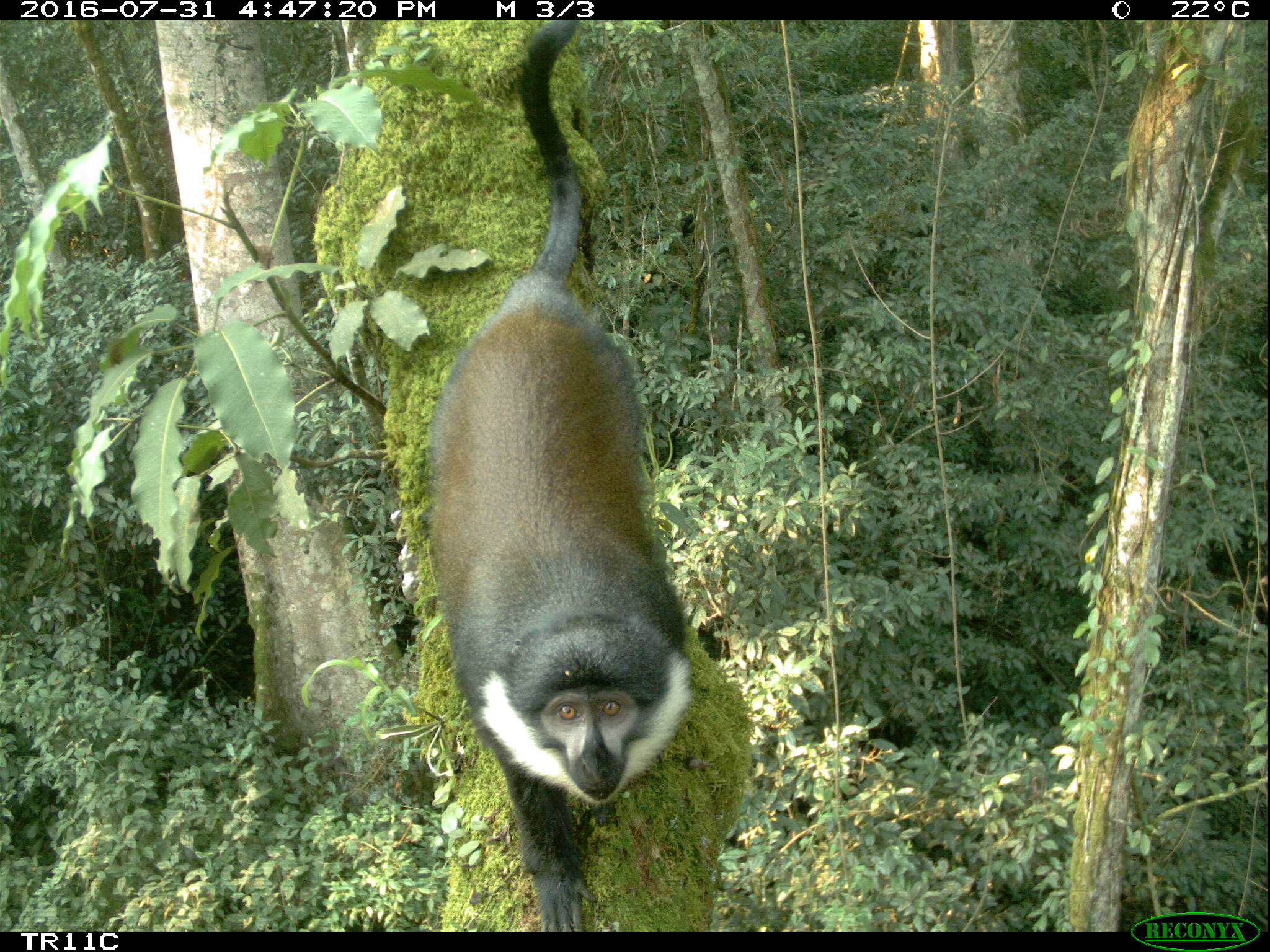
Moore wondered if setting cameras traps in trees might give a more complete picture of mammal species richness, the measure of how many different species are in an area. She was also curious how camera trapping compared to the traditional method of mammal surveying, in which researchers walk along straight lines, or transects, and take note of any wildlife they encounter.
“Species richness tells us about the health of an ecosystem. A higher species richness is generally a sign of a more stable ecosystem,” Moore said.
Researchers found that using all three methods — ground and arboreal cameras along with a line transect — gives the most complete picture of species richness. But if only two methods can be employed, either due to time, money, or other logistical constraints, using a combination of the ground and arboreal cameras gave higher and more precise estimates of the occurrence of animals in an area than any other combination of methods.

The camera trap method is not without its problems. One particular difficulty, said Moore, is that cameras can be triggered by any motion. Leaves blowing in the wind, a swaying branch — these are much more likely to occur in the trees, especially as you get higher into the canopy. Camera misfires result in a lot of empty photos to sort through. For instance, of the approximately 71,000 total photos captured for this study, only about a third were usable.
Despite some of the logistical and technical issues, Moore said she wants to get the message out that arboreal camera trapping is a viable method for species monitoring, especially for people who study primates. “We were able to capture photos of primates we knew were there but had never been able to photograph,” she said. These photos can be useful for understanding the behaviors of animals and their movements through the forest.
See related, Camera trapping in the trees, which shares solutions to challenges posed by arboreal camera trapping.
“A lot of people think that by now we know everything, but WCS in Nyungwe National Park started in the ’80s and we just found a new species in the park last year. So that just goes to show that even in places where researchers have been for decades, there is so much more to learn.”

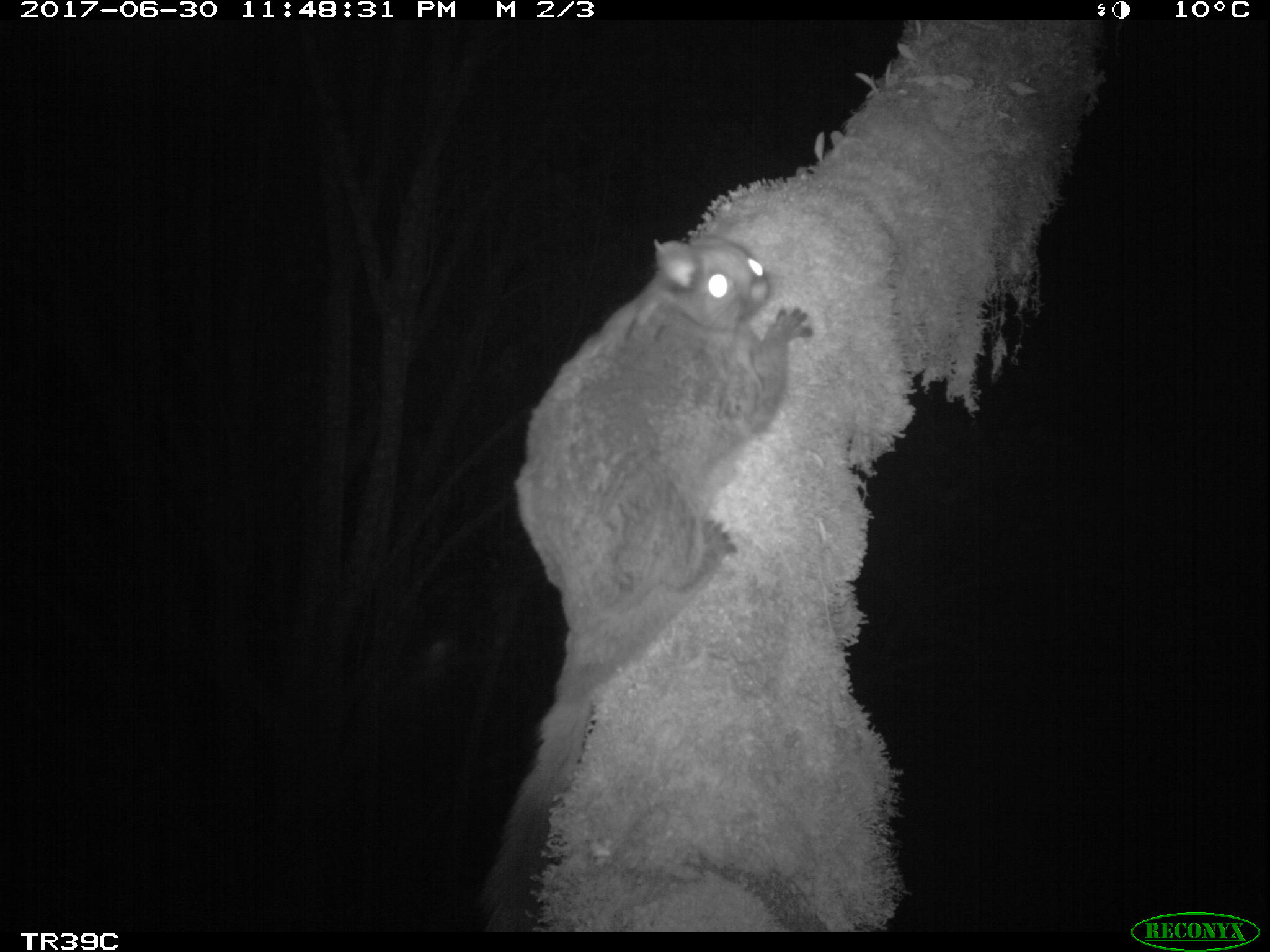


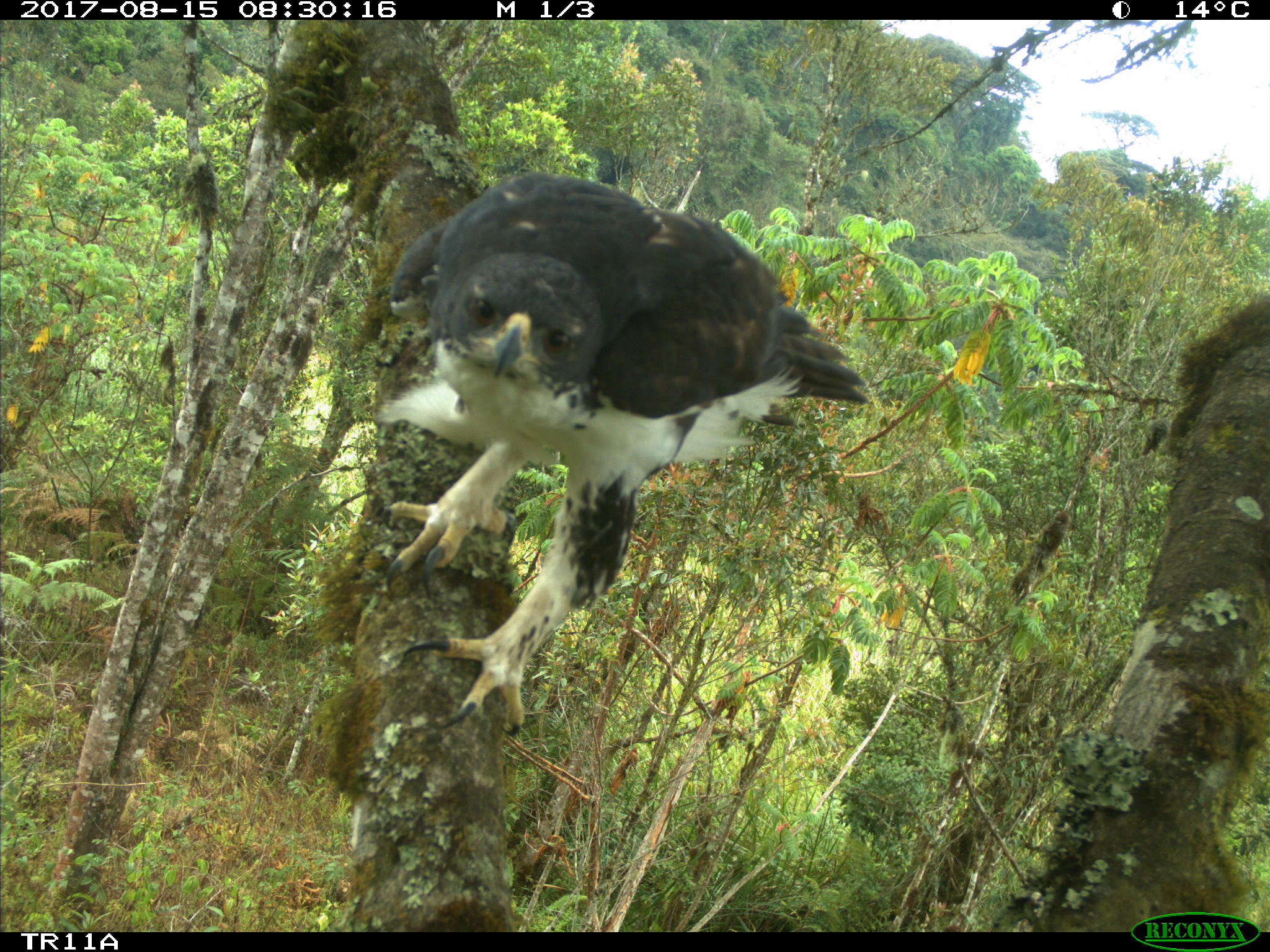


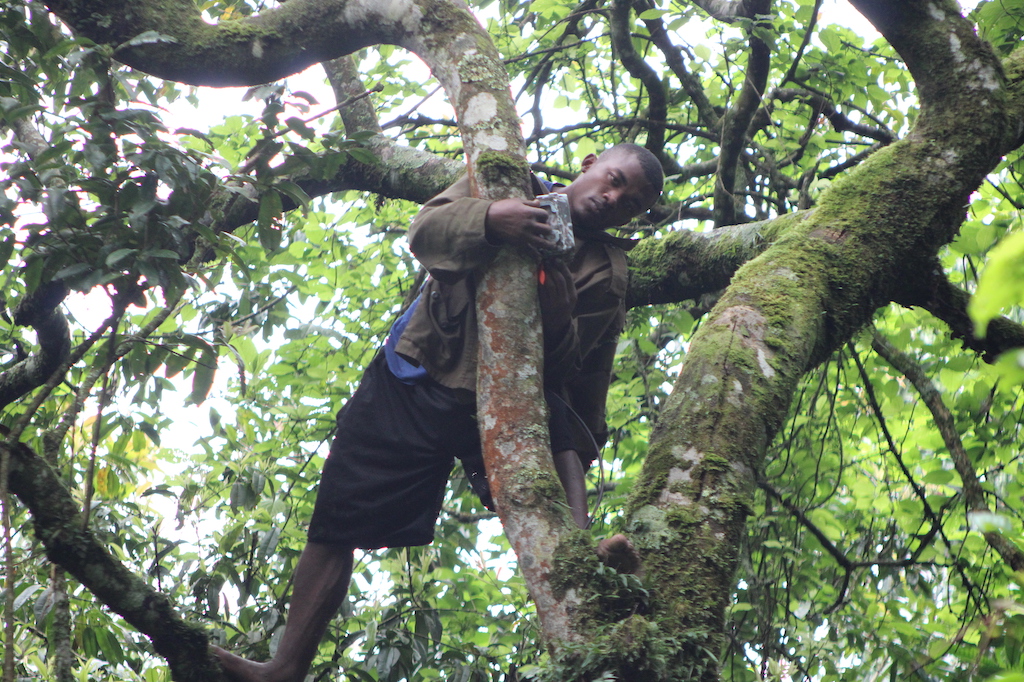
Citation: Moore, J. F., Pine, W. E., Mulindahabi, F., Niyigaba, P., Gatorano, G., Masozera, M. K., & Beaudrot, L. (2020). Comparison of species richness and detection between line transects, ground camera traps, and arboreal camera traps. Animal Conservation. doi:10.1111/acv.12569
Banner Image of a Angolan Black and White Colobus (Colobus angolensis). Arboreal camera trap photo courtesy of WCS Rwanda
Liz Kimbrough is a staff writer for Mongabay. Find her on Twitter @lizkimbrough_
FEEDBACK: Use this form to send a message to the author of this post. If you want to post a public comment, you can do that at the bottom of the page.
